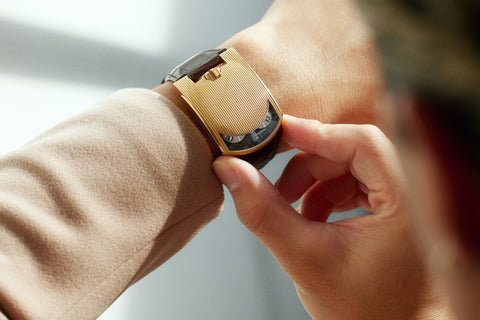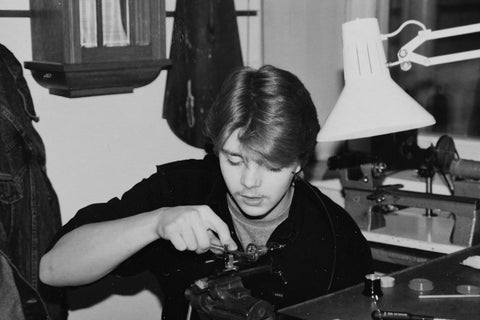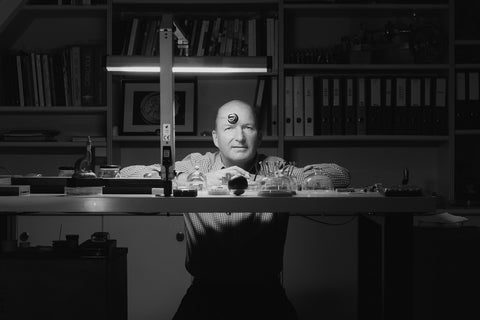Stepan Sarpaneva began his journey as a watchmaker in 1989, when he enrolled in the Finnish School of Watchmaking (Kelloseppäkoulu). After completing his studies there in 1992, he went on to study at the WOSTEP program in Switzerland, before embarking on a career that led him to work with brands such as Piaget, Parmigiani, Christophe Claret and Vianney Halter, which helped shape his skills and vision.
Sarpaneva spent time in restoration, including at Parmigiani, alongside Kari Voutilainen. As he put it himself, "I had to really learn the history of watchmaking with Kari, because we were working on things like minute repeaters and perpetual calendars, making parts for them."
Sarpaneva had been designing his own watches as far back as 1999. These were mainly one-off pieces, which he created for himself. In fact, a Japanese retailer once spotted one on his wrist and asked if he could possibly order one. As he remembers, "I made something for him and then a few pieces here and there for my friends. It grew very organically like that." He took his first step towards independence in 2003, returning to Finland to start Sarpaneva Watches. This was still a fairly early time to be an independent watchmaker and over the past 20 years, Sarpaneva's distinct aesthetic has only grown and developed.
His designs are inspired by Finnish landscapes and concepts, alongside the jewellery and designs of the family name in Pentti and Timo Sarpaneva. They also heavily feature industrial themes such as engineering and machinery. A pioneer of his style, Sarpaneva introduced an experimental perspective to his horological creations, a feat made all the more impressive by the fact that he is located quite a distance from Switzerland, resulting in limited pieces of each series and more of his work being done by hand.
The Korona has become the most recognisable execution of Stepan Sarpaneva’s watchmaking vision. The model has undergone several iterations throughout its lifetime, and this particular Korona RG was released in 2009. The RG expanded on the original Korona by focusing on the moonphase complication, and also marked the first time that Sarpaneva's watches were produced in a precious metal, rather than the typical steel.
The watchmaker’s idiosyncratic and distinctive character can clearly be seen through the piece’s design. Due to the small numbers produced at the workshop, Sarpaneva himself notes that most of these are more or less custom-made and unique in some way. The case is crafted from rose gold, with the angular yet subdued scalloped edges of the case are particularly eye-catching. Further to this, the dial takes inspiration from grilles, with a semi-openworked face that ensures the two faces of the moon are always slightly visible beneath. A heightened colour contrast is achieved between the rose gold case and hands against the deep grey dial, with the moon faces also in the same shade of rose gold. Stepan Sarpaneva favoured the use of Soprod’s self-winding A10, extensively modified to suit his requirements for each piece.
The large moonphase is an enigmatic detail that is a repeated motif throughout nearly all of Sarpaneva pieces. This example features two on the dial, allowing the wearer to see the current moonphase as well as the approaching phases. Notably, the moonphase can be adjusted through the crown and not through a pusher, as is typical of other watches. The distinctive moons are inspired by those seen in antique watchmaking, stylised with the watchmaker’s own contemporary take. Additionally, the reverse of the watch features a third distinctive moon face on the rose gold rotor, with the movement also visible through a grille-style covering.



















































































































































































































